What forms do I need to submit In my tax return?
Article Author: Amanda Swales Posted on: January 14, 2019 (Full Author Bio in the box on the right side) 2518 views
2518 views
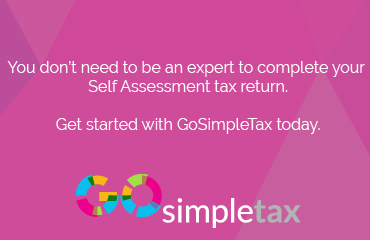
The main tax return (SA100) isn’t the only form that needs to be completed when the Self Assessment deadline arrives. Depending on your circumstances, there are a range of supplementary pages that need to be filled out and submitted along with it.
Knowing which ones apply to you ensures you complete the tax return not only correctly, but efficiently, writes GoSimple Software’s Technical Director, Mike Parkes.
Self-employment: SA103S or SA103F
As an IT contractor, if you are trading as a sole trader, you’ll need to submit one of the self-employment forms. If your annual turnover was below the VAT threshold for the given tax year, then you would fill out the shorter version (SA103S). Above this requires completion of the SA103F.
Regardless of the form, you’ll need to provide information around your business. You’ll give detail on when it was registered if it was after 5th April of the tax year, along with your turnover figure and any other business income. Allowable expenses and capital allowances can also be entered. Any information about losses from previous tax years should be included too.
UK property income: SA105
If you rent out any UK properties in addition to being a sole trader, whether by yourself or let jointly, then you will need to fill out the SA105. This asks questions about the number of properties rented, as well as whether you’re claiming Rent a Room relief.
You’ll provide information on your total rental income, and can also enter any expenses and capital allowances involved. Detail about any Furnished Holiday Lettings (FHL) will be required, if you rent these out in the UK or in the European Economic Area (EEA).
Foreign income or gains: SA106 or SA109
Perhaps you also receive income overseas via savings, dividends, pensions or benefits. The SA106 allows you to give information around this, including the amount of income before tax, and then foreign tax deducted or paid.
If you weren’t able to transfer the revenue to the UK, then this is classed as ‘unremittable income’ (simply choosing not to bring your foreign income to the UK does not count as unremittable), and there’s a relevant section for this on the form. You’d also input information around Foreign Tax Credit Relief on your income if you can claim this. Income from land and property abroad should be declared if you rent an overseas property.
Any other foreign income and gains can be added to the SA106 too. The SA109 would need to be completed if you’re classed as a non-UK or dual resident.
Other potential forms to file
There are a number of other supplementary pages that may require submission. The SA108 (capital gains summary) is necessary if you meet the criteria – for example if the chargeable assets you have sold or disposed of are worth over £45,200 (2018/19) or you made a gain in excess of the annual exemption of £11,300 for 2017/18. If you’re a partner in a partnership, then the SA104S or SA105F will need to be filed in addition to the SA100 for each individual.
Those who are either directors of a limited company or classified as an employee for the given tax year should complete the SA102. This requires information about pay and tax deducted, as well as any benefits or expenses. Income from trusts and settlements can be recorded by filling out the SA107.
Whichever forms you need to complete, they will need to be submitted along with the tax return in time for the 31st January deadline.
Latest Posts
-

Staying HMRC Compliant: VAT Returns Have Chan...
by Amanda Swales on January 29, 2020 Accounting & Tax -

Self Assessment Tax Return 101 - Filling In T...
by Amanda Swales on January 15, 2020 Accounting & Tax -

-



 How important is it to protect your income as a contractor
How important is it to protect your income as a contractor  RTI offers annual option for contractors
RTI offers annual option for contractors  How IR35 reforms in the private sector going to affect the self-employed?
How IR35 reforms in the private sector going to affect the self-employed?  How to deal with unplanned time off for UK Contractors
How to deal with unplanned time off for UK Contractors  Changes to the Flat Rate VAT Scheme are coming - are YOU ready?
Changes to the Flat Rate VAT Scheme are coming - are YOU ready?  Understanding tax basics - a guide for contractors
Understanding tax basics - a guide for contractors  Umbrella Company and IR35
Umbrella Company and IR35  Top 5 things a first-time Contractor should do when switching to Contracting
Top 5 things a first-time Contractor should do when switching to Contracting  Election 2015 - what is in it for contractors and freelancers
Election 2015 - what is in it for contractors and freelancers  What a Directors loan means and who can take one
What a Directors loan means and who can take one  Professional Indemnity Insurance Explained
Professional Indemnity Insurance Explained  Is it time to break up with your Accountant
Is it time to break up with your Accountant  What is Required For Your First Digital VAT Return: Making Tax Digital
What is Required For Your First Digital VAT Return: Making Tax Digital  Why Contractors should save for a rainy day
Why Contractors should save for a rainy day  Is there light at the end of the tunnel for UK Contractors
Is there light at the end of the tunnel for UK Contractors  Why Contractors should never stop learning
Why Contractors should never stop learning 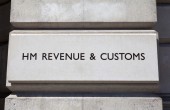 RIP Business Entity Tests
RIP Business Entity Tests  How to avoid time between contracts
How to avoid time between contracts  Contractor paid 2500 GBP to HMRC for tax return mess up
Contractor paid 2500 GBP to HMRC for tax return mess up  Why compliance has lost its meaning for contractors
Why compliance has lost its meaning for contractors  How can a contractor be a winner in the tax race
How can a contractor be a winner in the tax race 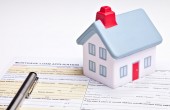 What is Contractor Mortgages and how to secure the best mortgage deal?
What is Contractor Mortgages and how to secure the best mortgage deal?  Why Contractors should set up a home office
Why Contractors should set up a home office  5 New Contractor Mortgages Friendly Lenders Enter The Market
5 New Contractor Mortgages Friendly Lenders Enter The Market  First Time Buyers take advantage of the new Help to Buy ISA
First Time Buyers take advantage of the new Help to Buy ISA  Will the low rates mortgage price war benefit UK Contractors?
Will the low rates mortgage price war benefit UK Contractors?  FCSA submits its official response to the HMRC consultation
FCSA submits its official response to the HMRC consultation  What can Limited Company contractors expect from the Budget 2017?
What can Limited Company contractors expect from the Budget 2017?  The rise of the female contractor
The rise of the female contractor  How will Autumn statement affect Contractors?
How will Autumn statement affect Contractors?  Simple guide to Tax relief on Motor expenses and business mileage
Simple guide to Tax relief on Motor expenses and business mileage  What does change in dividends mean to UK Contractors
What does change in dividends mean to UK Contractors  The golden rule of Contracting
The golden rule of Contracting  Insulting to Contractors
Insulting to Contractors  APSCo backs call for strategic review which could end raw deal for contractors
APSCo backs call for strategic review which could end raw deal for contractors  What is the 24 month rule and how does it apply to Contractors
What is the 24 month rule and how does it apply to Contractors  How will the new tax year affect IT Contractors and Umbrella Companies
How will the new tax year affect IT Contractors and Umbrella Companies  Where is your IT contracting career going
Where is your IT contracting career going  How the 2015 Budget could affect you as an Independent Contractor
How the 2015 Budget could affect you as an Independent Contractor  Chancellor announced dividend tax hike from April 2016
Chancellor announced dividend tax hike from April 2016  Top 10 cash flow tips for IT Contractors
Top 10 cash flow tips for IT Contractors  10 Must Have iOS Apps for UK Contractors
10 Must Have iOS Apps for UK Contractors  How IT Contractors can become an expenses wizard
How IT Contractors can become an expenses wizard  Benefits for Freelance Contractor Mortgages Insurance
Benefits for Freelance Contractor Mortgages Insurance  What forms do I need to submit In my tax return?
What forms do I need to submit In my tax return?  The top 3 common mistakes Contractors make
The top 3 common mistakes Contractors make  Why Brexit will not be an easy exit
Why Brexit will not be an easy exit  Fun ways to save money for the adventurous contractor
Fun ways to save money for the adventurous contractor  How does the recent IR35 changes in the public sector affect UK contractors?
How does the recent IR35 changes in the public sector affect UK contractors?  Registrar of Companies Scam Letter sent to Businesses
Registrar of Companies Scam Letter sent to Businesses  Autumn Statement 2016 - How will the VAT Flat Rate Scheme Restriction Affect Contractors?
Autumn Statement 2016 - How will the VAT Flat Rate Scheme Restriction Affect Contractors?  Why it is important for Contractors to network effectively
Why it is important for Contractors to network effectively  HMRC Employment Status Service tool - How accurate is it in determining the IR35 risk for contractors?
HMRC Employment Status Service tool - How accurate is it in determining the IR35 risk for contractors?  Amendments in Finance Bill to prevent misuse of Personal Service Companies
Amendments in Finance Bill to prevent misuse of Personal Service Companies  The Taxman is going to war on UK Contractors
The Taxman is going to war on UK Contractors  How HMRC continue to confuse matters for Contractors and Agencies
How HMRC continue to confuse matters for Contractors and Agencies  FCSA urges Osborne to get his facts right before tarnishing all contractors
FCSA urges Osborne to get his facts right before tarnishing all contractors  Is Umbrella Company the best solution for first-time Contractors?
Is Umbrella Company the best solution for first-time Contractors?  Festive Gift Ideas for Limited Company Directors
Festive Gift Ideas for Limited Company Directors 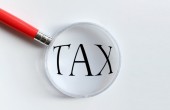 IR35 IT Contractors And Office Holders
IR35 IT Contractors And Office Holders  Relieve the stresses of Limited Company contracting with 4 simple solutions
Relieve the stresses of Limited Company contracting with 4 simple solutions 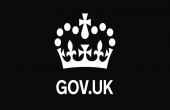 Parents working full time file petition for free childcare
Parents working full time file petition for free childcare 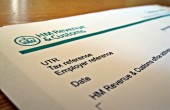 How Important is IR35 and Tax Planning to Contractor Accountants
How Important is IR35 and Tax Planning to Contractor Accountants  Do I Need To Complete The Self Assessment? How To Know If You Have A Tax Return Due
Do I Need To Complete The Self Assessment? How To Know If You Have A Tax Return Due  FCSA calls for HMRC to abandon its consultation on public sector use of off payroll staff
FCSA calls for HMRC to abandon its consultation on public sector use of off payroll staff  Barclays and Citigroup are the latest to cut IT Contractor pay
Barclays and Citigroup are the latest to cut IT Contractor pay  5 benefits of contracting through an umbrella company
5 benefits of contracting through an umbrella company  HMRC admits contractor tax change legislation needs a rewrite
HMRC admits contractor tax change legislation needs a rewrite  How much salary should I pay myself as a Limited Company Contractor
How much salary should I pay myself as a Limited Company Contractor  6 free tools all contractors should use
6 free tools all contractors should use  What all recruiters need to know
What all recruiters need to know  How will Supervision Direction or Control rules affect Contractors
How will Supervision Direction or Control rules affect Contractors  Personal Service Company Guide for UK Contractors
Personal Service Company Guide for UK Contractors  Great Chance to Win a Trip to Monaco for IT Contractors
Great Chance to Win a Trip to Monaco for IT Contractors  Intermediaries' legislation - IR35: What is the likely impact of the new rules for contractors working in the public sector?
Intermediaries' legislation - IR35: What is the likely impact of the new rules for contractors working in the public sector?  MP David Morris calls for new IR35 legislation for Contractors
MP David Morris calls for new IR35 legislation for Contractors  Is contracting the key to a successful and family-friendly career
Is contracting the key to a successful and family-friendly career  Budget is good for small business but still hurts contractors
Budget is good for small business but still hurts contractors  Doubt is cast on HMRC new IR35 proposals for contractors
Doubt is cast on HMRC new IR35 proposals for contractors  Why Contractors MUST Download TeraCopy Freeware
Why Contractors MUST Download TeraCopy Freeware  5 Trusted Contractor Services Providers in the UK
5 Trusted Contractor Services Providers in the UK  Contractors feel puzzled of the UK job market
Contractors feel puzzled of the UK job market  Why Contractors in trust based schemes should think twice
Why Contractors in trust based schemes should think twice  The 10 commandments of contracting
The 10 commandments of contracting  The true value of umbrella companies for UK contractors
The true value of umbrella companies for UK contractors  Beginners Guide to IT Contracting
Beginners Guide to IT Contracting  Sole Enterprise with Protected Assets or Limited Company - Which is better for Contractors?
Sole Enterprise with Protected Assets or Limited Company - Which is better for Contractors?  First Time Buyers get cashback on Contractor Mortgages
First Time Buyers get cashback on Contractor Mortgages  UK plc confused about T&S regulations says FCSA research
UK plc confused about T&S regulations says FCSA research  A checklist and timeline for new Contractors
A checklist and timeline for new Contractors  Why Contractors Need To Understand IR35
Why Contractors Need To Understand IR35  General Elections from the Tax perspective for UK Contractors
General Elections from the Tax perspective for UK Contractors  The future of IR35 in the public and private sectors
The future of IR35 in the public and private sectors 

